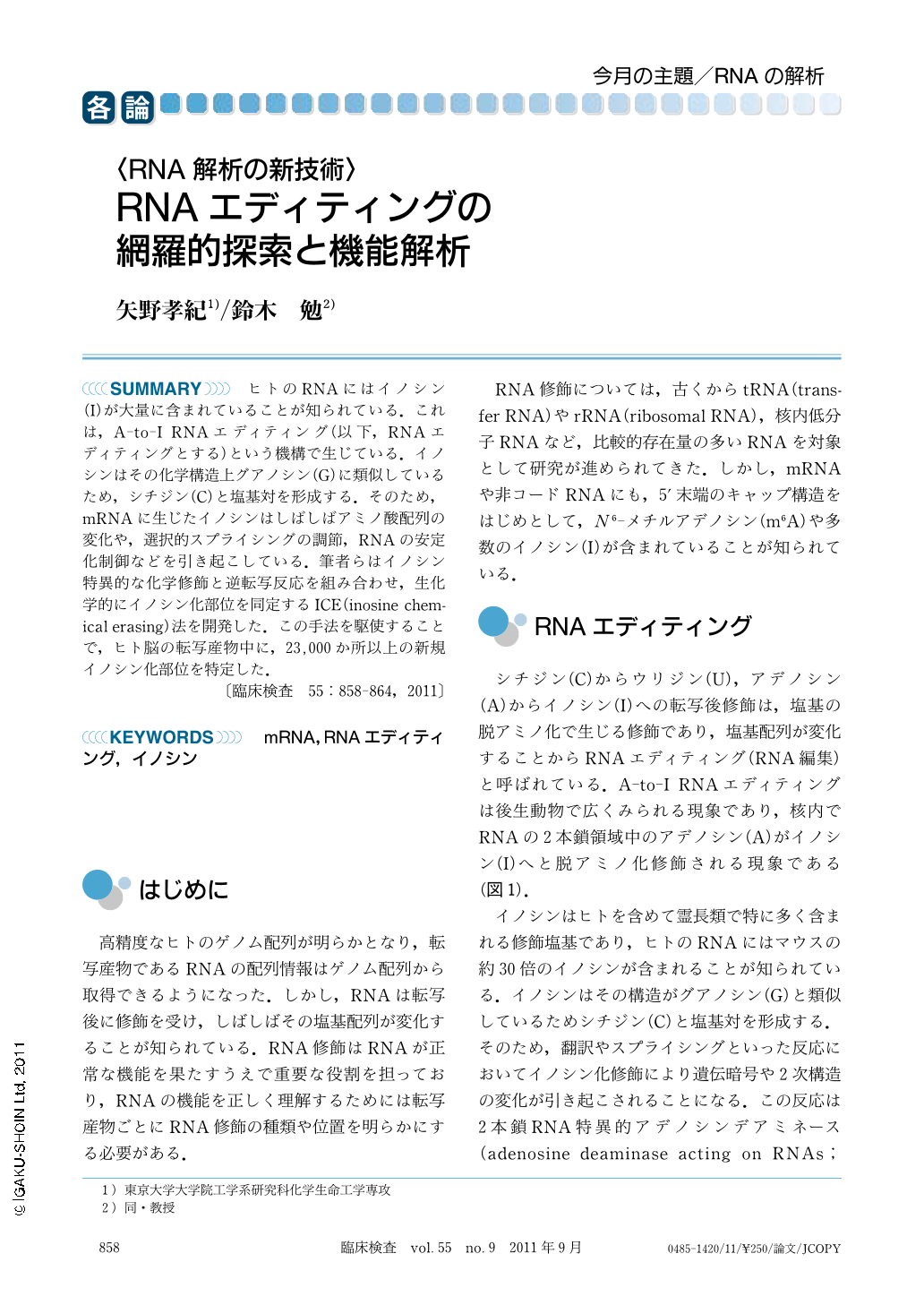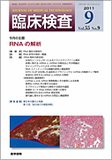Japanese
English
- 有料閲覧
- Abstract 文献概要
- 1ページ目 Look Inside
- 参考文献 Reference
ヒトのRNAにはイノシン(I)が大量に含まれていることが知られている.これは,A-to-I RNAエディティング(以下,RNAエディティングとする)という機構で生じている.イノシンはその化学構造上グアノシン(G)に類似しているため,シチジン(C)と塩基対を形成する.そのため,mRNAに生じたイノシンはしばしばアミノ酸配列の変化や,選択的スプライシングの調節,RNAの安定化制御などを引き起こしている.筆者らはイノシン特異的な化学修飾と逆転写反応を組み合わせ,生化学的にイノシン化部位を同定するICE(inosine chemical erasing)法を開発した.この手法を駆使することで,ヒト脳の転写産物中に,23,000か所以上の新規イノシン化部位を特定した.
Adenosine-to-inosine (A-to-I) RNA editing is a post-transcriptional processing event involved in diversifying the transcriptome responsible for various biological processes. Although bioinformatic approaches have predicted a number of A-to-I editing sites in cDNAs, the human transcriptome is thought to still harbor large numbers of as-yet-unknown editing sites. Exploring new editing sites requires a biochemical method to accurately identify inosines on RNA strands. We have developed a chemical method to identify inosines, called ICE (inosine chemical erasing), that is based on cyanoethylation combined with reverse transcription. We employed this method to carriy out large-scale identification of novel editing sites in the human brain transcriptome.

Copyright © 2011, Igaku-Shoin Ltd. All rights reserved.


